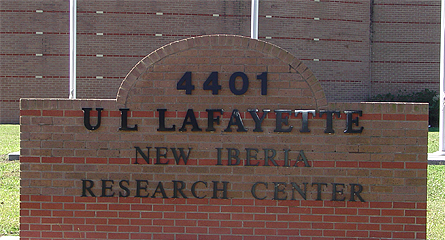Federal officials will take no action in response to accidents that resulted in the death of a primate and the amputation of another primate’s hind limb at the University of Louisiana at Lafayette’s New Iberia Research Center over a year ago.
Both incidents were self-reported by the University.
A pigtailed macaque was found electrocuted Oct. 21, 2013, in an outdoor enclosure after workers began testing heaters to prepare for cooler fall temperatures. Two technicians who attempted to retrieve the animal’s body received mild electric shocks.
“An electrical contractor determined that there was a loose ground wire in the junction box for the heating lamp assembly and that the insulation surrounding one of the electrical wires had worn through, so that copper electric wire was in contact with a metal junction box,” said Dr. Ramesh Kolluru, vice president for Research at the University. “Many improvements were subsequently made. Heaters were used in outdoor closures without incident when temperatures dropped earlier this fall.”
After the incident occurred in 2013, an internal facilities crew and an external electrical contractor immediately conducted visual inspections of external cable supports and components, inspected wiring connections in breaker panels, and tested or installed GFI circuit breakers in primate enclosures that have heating lamp assemblies.
They then replaced all internal wiring, installed conduit insulators to protect wiring, added more ground connections, tested ground continuity, inspected heat lamp socket assemblies, installed receptacle plates, and conducted controlled circuit testing.
The NIRC also provided a secondary grounding system.
A standard operating procedure, “Heat Lamp System Certification and Maintenance,” was also written and approved. NIRC personnel received training on the SOP in December 2013.
In accordance with that SOP, NIRC personnel now take the following action prior to the arrival of cold weather each winter:
• inspect external cable supports and wiring connections in breaker panels;
• test GFI circuit breakers; and
• open all junction boxes to verify that all connections are tight and insulators remain in place.
In an April 18, 2014, letter to Kolluru, Dr. Brent C. Morse, animal welfare program specialist with the Division of Compliance Oversight in the Office of Laboratory Animal Welfare, said the University’s prompt reporting was consistent with the philosophy of self regulation. “Similarly, the timely action taken to respond to the issue was appropriate. Due to the actual and potential animal welfare hazard, it was appropriate to take extensive measures to assure prevention of a recurrence of this unfortunate incident.
“We appreciate being informed of this matter and find no cause for further action by this office,” he stated.
NIRC self-reported that a 2-year-old female pigtailed macaque was hurt on Nov. 12, 2013, while being captured for a routine physical examination. A technician grasped the animal by a hind limb, causing a fracture.
Due to the animal’s age and the extent of its injuries, NIRC’s veterinary staff determined that amputation of the hind limb was the best course of action. The animal made a full and uneventful recovery and was returned to social housing with the other members of its peer group.
That primate is part of a breeding colony and was not participating in any research studies at the time of its injury.
The technician was disciplined and retrained, according to the University.
In a Jan. 9, 2014, letter to Kolluru, Morse said the NIRC’s action in response to the injury was appropriate.
OLAW found “no cause for further action by this office,” Morse said.
